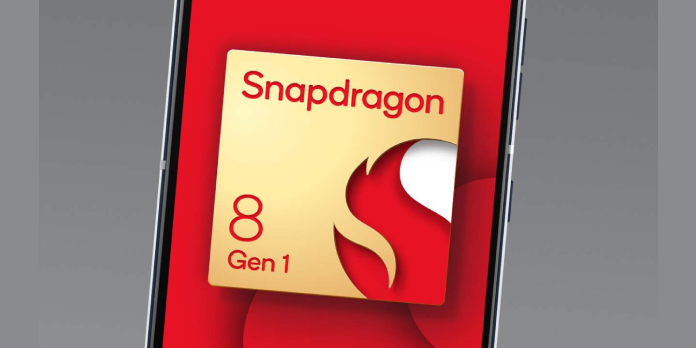Today, we’ll take a look at Qualcomm’s freshly unveiled Snapdragon 8 Gen 1 Mobile Platform. This next-generation technology will be available in smart devices soon; for now, we’re looking at what Qualcomm announced about their upcoming Mobile Platform for the world’s most powerful smartphones (and related smart gadgets). We’ve compiled a list of the details that will be important to you, the end-user, today.
1. Upgrades to 5G
You’ll almost surely have a 5G-capable smartphone and 5G connectivity pretty much anyplace you go in the next couple of years. The 4th Gen Snapdragon X65 5G Modem-RF System is supported by the Snapdragon 8 Gen 1 series. Three “first-in-the-world” characteristics are included in this system.
This is the first 10-gigabit 5G Modem-RF system in the world. It also has the world’s first 5G uplink carrier aggregation, which combines multiple frequency bands for possibly faster upload rates on mobile devices than ever before.
The world’s first 3GPP Release 16 5G solution is also delivered via this technology. Mobile connectivity with 5G should be much more reliable as a result of this. The Snapdragon 8 Gen 1 series is slated to be deployed in smartphones in the first quarter of 2022, so this technology could be ready to go even before you’re ready to connect!
2. The capability of the camera
Snapdragon Sight Technology debuted with the Snapdragon 8 Gen 1 processor. This technology enables your phone to use Qualcomm’s first-ever 18-bit ISP (image signal processor), a major improvement over the previous approach (14-bit). This powerful picture processor technology can capture 8K HDR video and images at 3.2 gigapixels per second.
The power of your device’s camera configuration, as with prior Qualcomm solutions, is determined by a mix of factors. Qualcomm can’t provide all of the camera power you’ll need; you’ll need a high-end hardware arrangement that takes full advantage of Qualcomm’s image processing technology.
The good news is that the most innovative manufacturers take full advantage of the camera technology in the most recent Qualcomm processor. All we have to do now is wait to see which businesses use this technology in their next smartphones to determine if Qualcomm’s claims are true.
3. Gaming ability
Audiokinetic technology for gaming continues with “immersive, console-quality sound,” according to Qualcomm. Qualcomm’s Audiokinetic technology is being used for the first time on this platform.
As is customary, this latest platform significantly outperforms its predecessor in terms of graphics processing capability. The Snapdragon 8 Gen 1’s Adreno GPU, according to Qualcomm, is 30 percent faster at graphics rendering than the Snapdragon 888. This generation also outperforms the Snapdragon 888 in terms of power efficiency by a stunning 25%.
Vulkan 1.1, OpenCL 2.0 FP, and OpenGL ES 3.2 API support, HDR gaming, Adreno Frame Motion Engine, volumetric rendering, and physically-based rendering are all supported by the Snapdragon 8 Gen 1. Qualcomm even mentions Epic Games’ support for Unreal Engine 5 – complete with all the bells and whistles that such support entails.
4. Audio compatibility
Qualcomm included the first Bluetooth LE Audio functionality, such as voice back-channel for gaming, stereo recording, and broadcast audio, with the Snapdragon 8 Gen 1. Dual Bluetooth antennae, Bluetooth 5.2, and aptX Adaptive support are all part of Snapdragon Sound Technology.
With a new Qualcomm Aqstic smart speaker amplifier, the latest Qualcomm Audio and Voice Communication Suite, Total Harmonic Distortion + Noise (THD+N) and -108dB playback, the Qualcomm Aqstic audio codec is in action.
5. A few fundamentals
Qualcomm’s Snapdragon 8 Gen 1 Mobile Platform features 4nm Process Technology and supports 4K resolution at 60 Hz (image refresh rate of 60 frames per second) or QHD+ resolution at 144 Hz. With Arm Cortex-X2 technology, we can expect up to 3.0 GHz Kryo CPU support (64-bit).
You’re looking at a smartphone with a Snapdragon 8 Gen 1 system onboard if you notice a set of specifications that contains the component number SM8450. With support for Leica’s Leitz Look mode, Hugging Face (notifications), and voice analysis from Sonde Health, you’ll be rolling with the Qualcomm AI Engine 7th Gen.
There’s also one for businesses.
Qualcomm also announced a Neural Architecture Search partnership with Google Cloud (NAS). This technology will first be accessible on the Snapdragon 8, Gen 1 Mobile Platform, and eventually throughout Qualcomm Technologies’ portfolio. Companies will automatically construct and optimize artificial intelligence (AI) models using this technology (rather than manually).
The Google Cloud Vertex AI NAS will collaborate with Qualcomm Technologies’ SoC devices to speed up development for a wide range of platforms. This partnership will benefit Qualcomm Technologies’ automotive, mobile, ACPC, XR, and IoT platforms.
Source: slashgear



